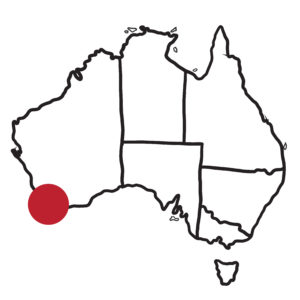A plan to rescue Nyoongar
WA translation project “sets a model of how to revive a language”
 In Perth’s St George’s Cathedral on a Sunday in 2014, the choir sang, “Ngala boorda yanganan Birdiyar,” the Benedictus in the Nyoongar language. The service celebrated the first time the Nyoongar people of Western Australia had part of the Bible, Luke’s Gospel, in their own language.
In Perth’s St George’s Cathedral on a Sunday in 2014, the choir sang, “Ngala boorda yanganan Birdiyar,” the Benedictus in the Nyoongar language. The service celebrated the first time the Nyoongar people of Western Australia had part of the Bible, Luke’s Gospel, in their own language.
Five years on, there is demand for more of the Bible to be translated into Nyoongar and work has begun on the translation of the Old Testament Book of Ruth.
The Nyoongar language is spoken in the southwest of WA, including what is now Perth. No Bible translation had been attempted in Nyoongar until the 1990s. The language is still considered “at risk”, meaning the Ruth translation is a language revitalisation project. This is due to decades of government policy which forbade the use of the Nyoongar language in schools and homes.
Parents were forbidden to speak Nyoongar to their children, so a generation of Nyoongar children grew up unable to understand their traditional language.
According to Bible Society Australia’s Translation Consultant, John Harris, the gospel of Luke in Nyoongar language was “a world first … [for] a translation of a gospel into a damaged language – and it has a role in revival of language.”
“This gospel sets a model of how to revive a language.”
“I saw my own Bible in my own language.” – Tom Little
Tom Little, key Nyoongar translator for the Gospel of Luke, is now working on translating the Book of Ruth. The translation process for him is highly personal and meaningful: “I saw my own Bible in my own language. To be able to say these words are my own words!”
“The words took on so much meaning to me through the translation process. I love the process of translation. Hearing the word in your own language gives you ownership. There are different shades of meaning in the different languages. I enjoy this process and would love to do more.”
Nyoongar translators are keen to translate Ruth into book form, as well as create audio recordings and Bible Engagement resources in Nyoongar (such as apps), to encourage and strengthen Nyoongar Christians.
Tom Little’s mother, Lorna, and her sister Vivienne Sahanna, both Nyoongar women, began the translation project that went on to focus upon the Luke of Gospel.
They approached the Bible Society Australia in 1999 and Harris was appointed as their translation consultant.
Vivienne led the group including her sisters, Lorna and Joanna, her nephew Tom and other members of their extended family. The work was slow, partly because the translators were volunteers but also due to the challenge of reviving words and their meanings.
The volunteers worked with Harris for 15 years on the translation. Despite illnesses and the deaths of Lorna, Pastor Len Walham and linguist Wilf Douglas, the Gospel of Luke – Warda Kwabba Luke-ang – was completed into the language of the Nyoongar people in 2014.
“This has been a great project – but not an easy one.” – John Harris
“Even though Nyoongar people read English, it’s not the language to which their emotions, their feelings and identity are attached,” says Harris. “Even those who don’t speak Nyoongar well know they are Nyoongar people.
“The English Bible is the language of the invader.”
“The Nyoongar translation has been one of the great things of my life,” shares Harris. “As now God doesn’t just speak the language of the invader. This has been a great project – but not an easy one.”
Bible Society Australia supports Nyoongar people relearning and using their language. It will work closely with the Nyoongar Language Centre to ensure resources are distributed and promoted among the community.

